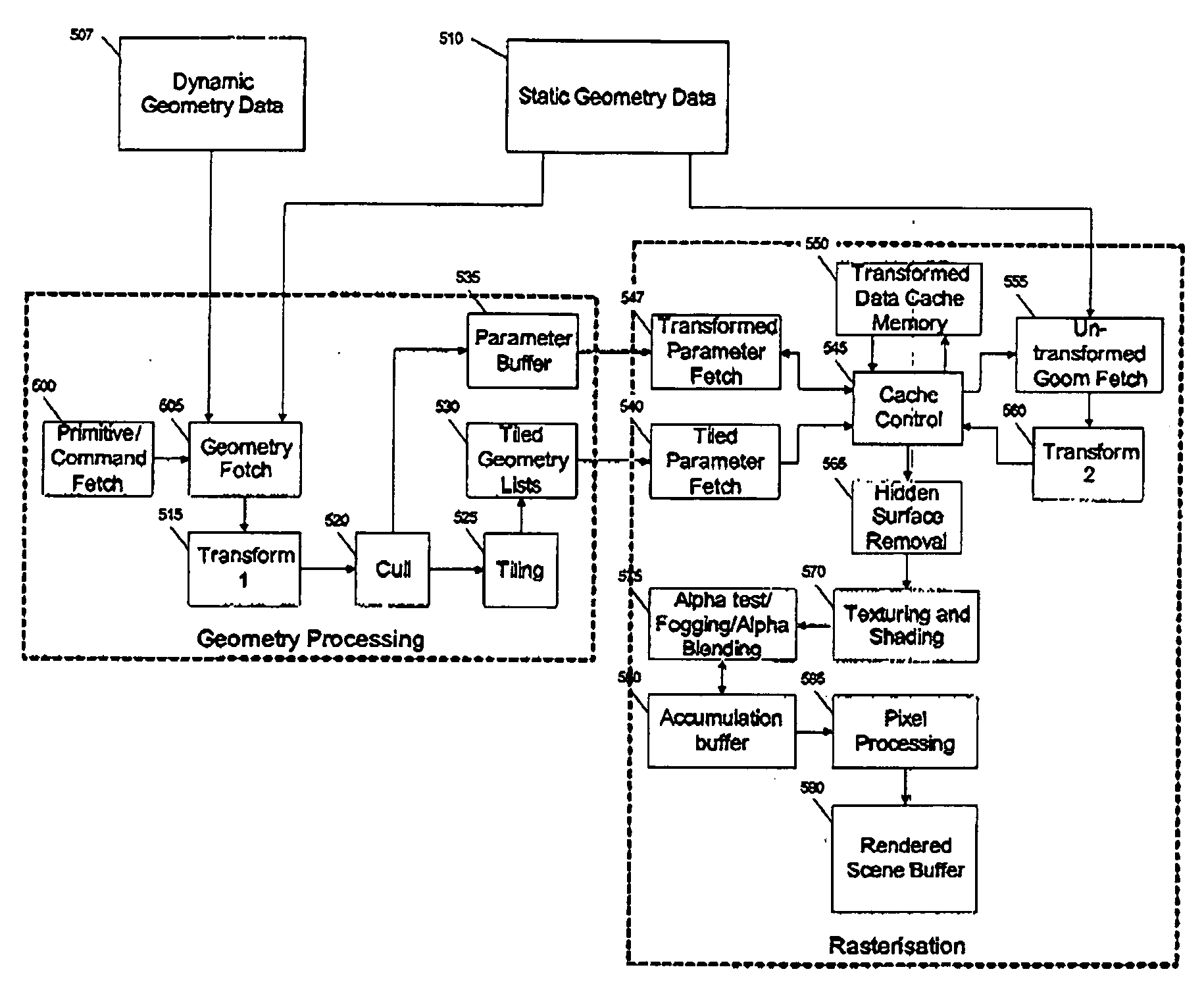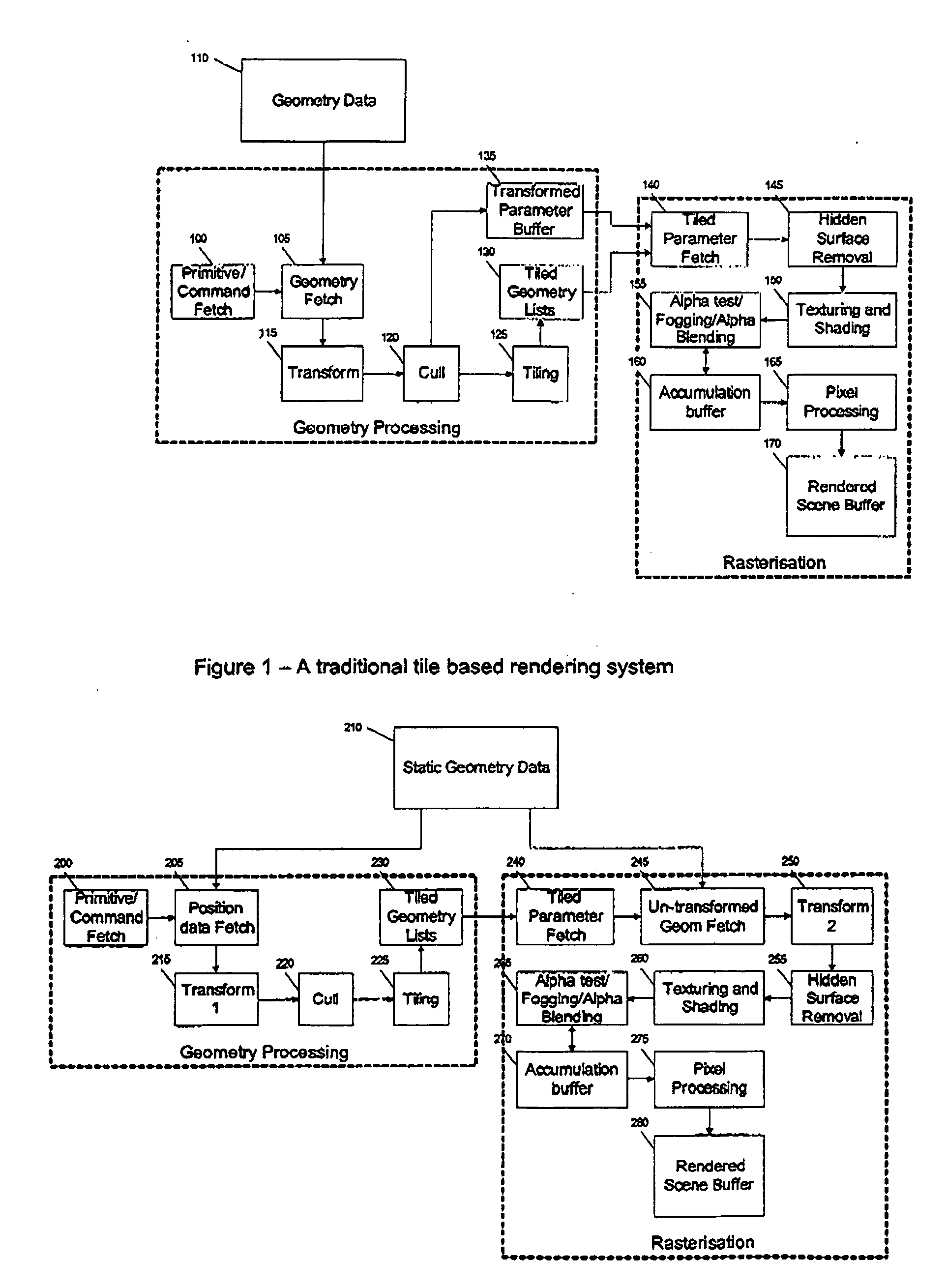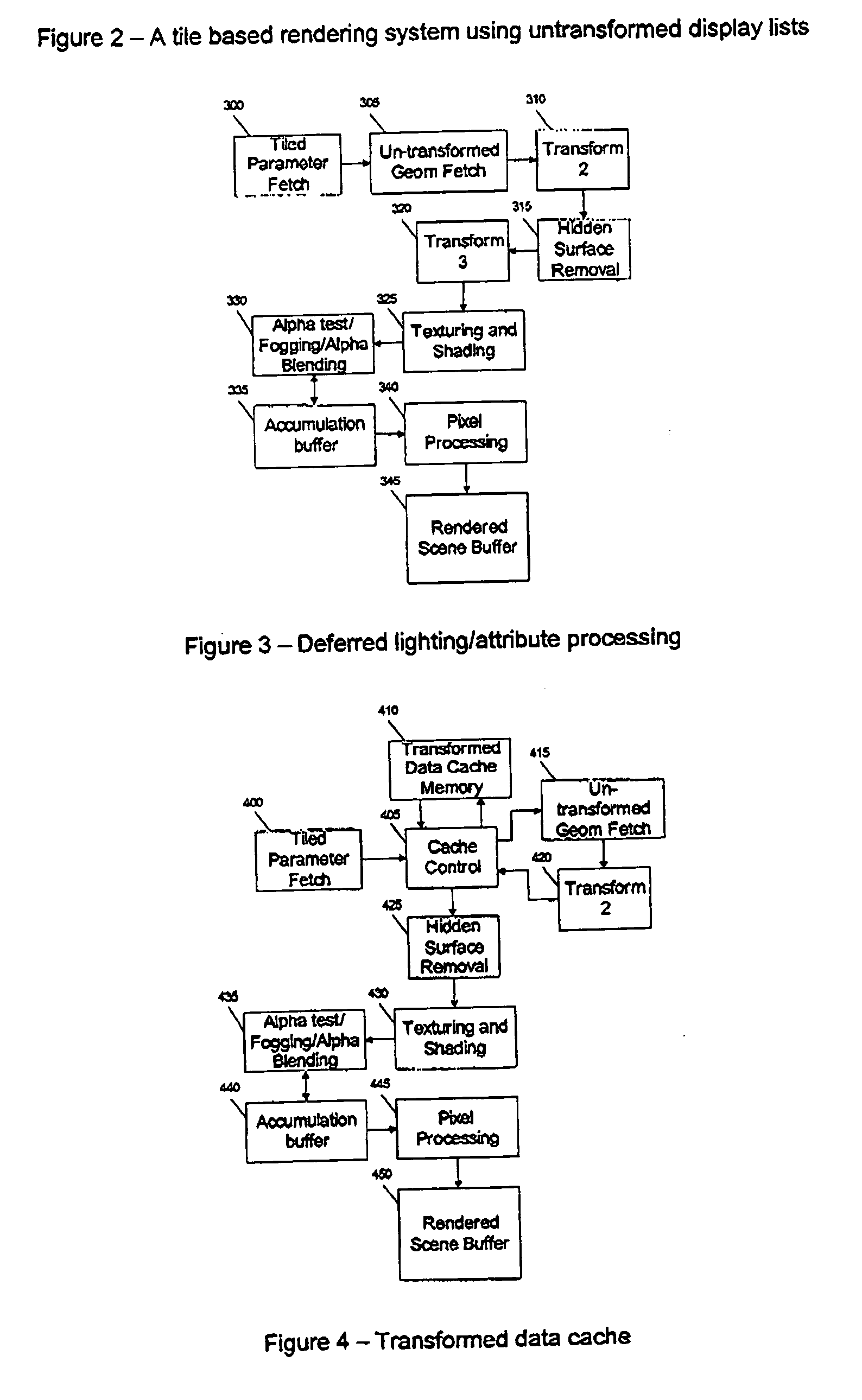Untransformed display lists in a tile based rendering system
a tile based rendering and display list technology, applied in image memory management, instruments, processor architecture/configuration, etc., can solve the problems of large amount of additional storage and memory bandwidth, and achieve the effect of reducing the amount of storag
- Summary
- Abstract
- Description
- Claims
- Application Information
AI Technical Summary
Benefits of technology
Problems solved by technology
Method used
Image
Examples
Embodiment Construction
[0014]FIG. 2 illustrates a tile based rendering system that has been modified to support an untransformed display list. During the geometry processing phase a primitive / command fetch unit 200 retrieves command and primitive data from memory and passes this to a position data fetch unit 205 which fetches a position part of static geometry data from memory 210 and passes it to transform 1 unit 215. This transforms the primitive into screen space only i.e. it does not apply any lighting / attribute processing as would occur in the system of FIG. 1. The resulting screen space position data is passed to a culling unit 220 which culls any geometry in the same manner as the system of FIG. 1. Unlike the system of FIG. 1 the culling unit does not write the remaining geometry data to a transformed parameter buffer, instead It only passes the position data of the remaining geometry to a tiling unit 225.
[0015]In the system of FIG. 1, the tiling unit generates references to transformed geometry th...
PUM
 Login to View More
Login to View More Abstract
Description
Claims
Application Information
 Login to View More
Login to View More - R&D
- Intellectual Property
- Life Sciences
- Materials
- Tech Scout
- Unparalleled Data Quality
- Higher Quality Content
- 60% Fewer Hallucinations
Browse by: Latest US Patents, China's latest patents, Technical Efficacy Thesaurus, Application Domain, Technology Topic, Popular Technical Reports.
© 2025 PatSnap. All rights reserved.Legal|Privacy policy|Modern Slavery Act Transparency Statement|Sitemap|About US| Contact US: help@patsnap.com



